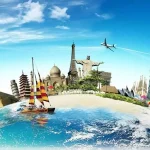
Just before the sweeping limitations imposed by the Coronavirus pandemic, I had the opportunity to visit Honolulu, Hawaii, for work. Landing over a weekend provided the perfect opportunity to explore the Pearl Harbor National Memorial, a site deeply embedded with history and national importance.
This memorial honors the memories of 1,102 out of the 1,177 sailors and Marines who lost their lives on the USS Arizona during the surprise attack by Japanese forces on December 7, 1941. If you find yourself on Oahu, it’s a place that shouldn’t be missed.
To ensure your visit, it’s recommended to secure tickets from recreation.gov ahead of time. Despite checking this platform two months before my intended visit, I wasn’t successful.
Multiple tour packages are available on the memorial’s official site, and I admit it was somewhat puzzling. I chose the USS Arizona Memorial and Narrated Headset tour, priced at $7.50, touted as the “most popular” option. On reflection, a significant portion of this fee was for the self-guided audio tour, and one could actually enjoy the place and the boat ride to the memorial for just $1. Nonetheless, the small fee contributes to maintaining the site.
Booking our tour for 3 pm, we arrived fifteen minutes ahead of schedule. This gave us just enough time to deal with the unexpected baggage size regulations. Large bags, including camera cases, backpacks, and diaper bags, aren’t allowed, necessitating a $5 storage fee at their kiosk.
Our journey began with an insightful documentary, shedding light on the Pearl Harbor attack through real footage and firsthand accounts of survivors. However, on our tour day, the waters proved too turbulent for the boat to safely approach the iconic USS Arizona Memorial. This architectural marvel symbolically captures America’s peak pride pre-war, the subsequent despair following the attack, and the nation’s resurgence post-war.
Our boat ride also encompassed the USS Missouri, the last battleship the United States commissioned, and the historic site where Japan formally surrendered, ending World War II.
After returning to the mainland, we perused the museum, its well-kept grounds, and the souvenir store. Our initial plans included exploring the USS Bowfin naval submarine, but time constraints and an additional fee deterred us. However, it looked like the park was in the process of extending the USS Bowfin Submarine Museum & Park.
Here’s hoping we can soon freely explore such historical treasures again. If you’re seeking inspiration on how to engage with the world during these trying times, consider virtual tours and free online museum visits.










